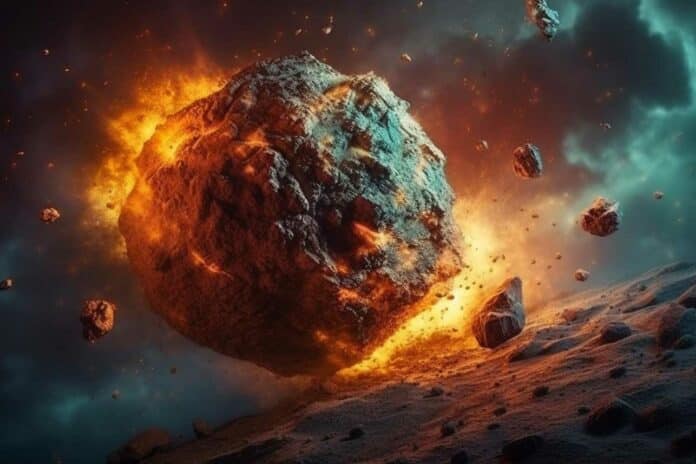Scientists don’t fully understand how the first generation of inner Solar System planetesimals formed. They could have formed near the silicate condensation line or water snowline in the solar protoplanetary disk. It needs to be clarified whether their chemical compositions match those formed near the silicate condensation line (without water and reduced) or the water snowline (with water and oxidized).
Now, a new study combines meteorite data with thermodynamic modeling and determines that the earliest inner solar system planetesimals must have formed in the presence of water, challenging current astrophysical models of the early solar system.
Researchers study iron meteorites as samples from the early solar system. These meteorites represent the metallic cores of the earliest planetesimals that didn’t become planets but orbited the solar system before reaching Earth. By analyzing the chemical compositions of these meteorites, scientists can learn about the conditions in which they formed.
This helps answer questions about whether Earth’s building blocks formed far from the Sun, allowing the existence of water ice, or closer to the Sun, resulting in dry planetesimals. Even though the meteorites don’t contain water, scientists can deduce its past presence by examining its effects on other chemical elements.
Water, comprised of two hydrogen atoms and one oxygen atom, can undergo oxidation in the presence of other elements. In this process, water transfers its oxygen atom away. For instance, when iron metal reacts with water, it forms iron oxide. With enough water, this process can produce rust, which consists of Fe2O3 and FeO(OH). The presence of rusty iron oxide on Mars suggests that the Red Planet had water in the past.
Damanveer Grewal, the study’s lead author and a former postdoctoral scholar at Caltech, has expertise in utilizing chemical signatures from iron meteorites to learn about the early solar system. Even though any iron oxide from the earliest planetesimals has disappeared over time, researchers could estimate the extent of iron oxidation by analyzing these meteorites’ metallic nickel, cobalt, and iron contents. Since these three elements should exist in roughly equal ratios compared to other primitive materials, a deviation would suggest that some iron had undergone oxidation.
Paul Asimow (MS ’93, PhD ’97) said, “Iron meteorites have been neglected by the planet-formation community, but they constitute rich stores of information about the earliest solar system history, once you work out how to read the signals. The difference between what we measured in the inner solar system meteorites and what we expected implies an oxygen activity about 10,000 times higher.”
The researchers discovered that iron meteorites believed to originate from both the inner and outer solar system exhibited a similar degree of missing iron metal. This similarity suggests that the planetesimals from both categories of meteorites formed in a region of the solar system where water was present, indicating that the foundational components of planets incorporated water from the very beginning.
These findings challenge existing astrophysical models of the solar system. If the planetesimals formed at Earth’s present orbital location, the presence of water would imply a significantly cooler inner solar system than current models suggest. An alternative possibility is that they formed farther out, where temperatures were lower, and later migrated inward.
Grewal said, “If water was present in the early building blocks of our planet, other important elements like carbon and nitrogen were likely present as well. The ingredients for life may have been present in the seeds of rocky planets right from the start.”
Asimow said, “However, the method only detects water that was used up in oxidizing iron. It is not sensitive to excess water that might go on to form the ocean. So, the conclusions of this study are consistent with Earth accretion models that call for late addition of even more water-rich material.”
Journal Reference:
- Grewal, D.S., Nie, N.X., Zhang, B. et al. Accretion of the earliest inner Solar System planetesimals beyond the water snowline. Nat Astron (2024). DOI: 10.1038/s41550-023-02172-w
